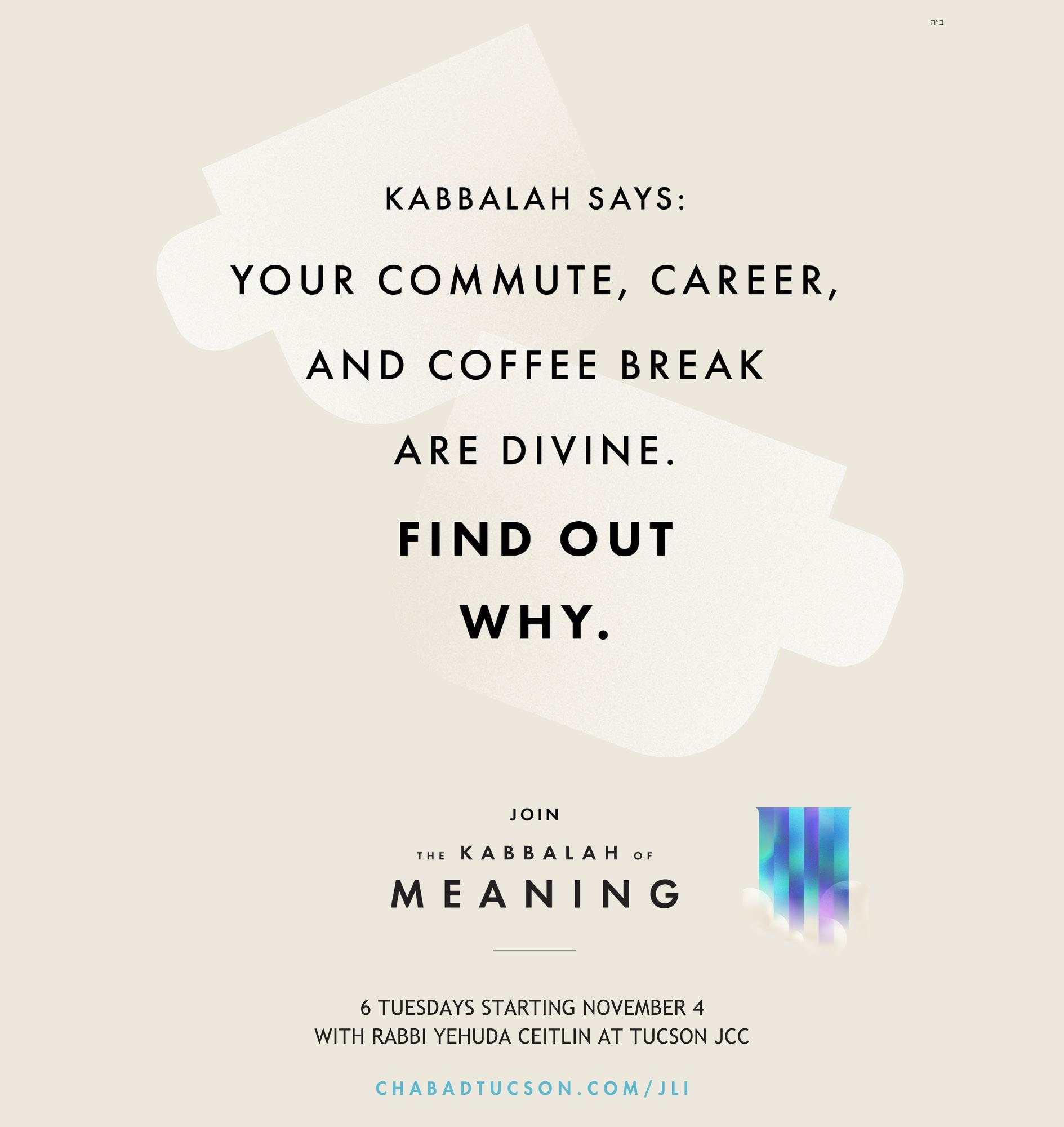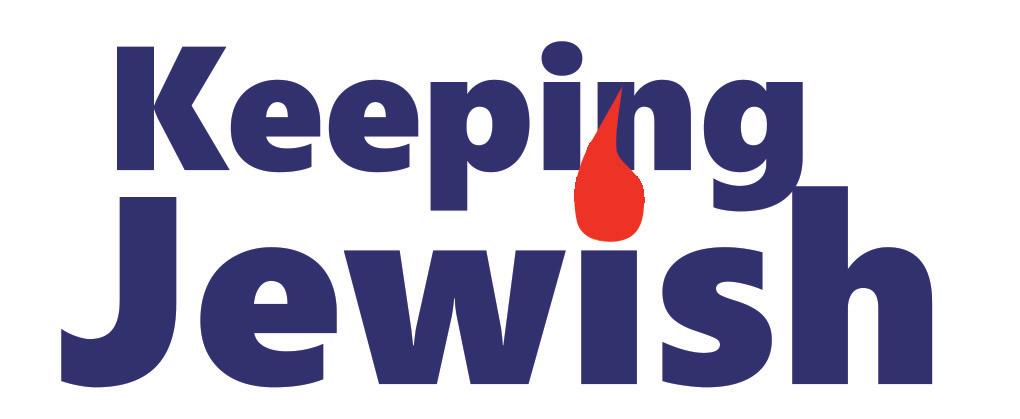
Positioned for Takeoff
The first step forward of the new Jewish year
Kosher
Hollywood Behind Salvador Litvak’s film “Guns & Moses”

Bright & Zesty
Green beans even a picky eater would enjoy
He’Brew
Alexander Levin was Arizona’s first brewer


The first step forward of the new Jewish year
Hollywood Behind Salvador Litvak’s film “Guns & Moses”

Bright & Zesty
Green beans even a picky eater would enjoy
Alexander Levin was Arizona’s first brewer
Tucson residents walk so that hostages in Gaza aren’t forgotten

The Jewish outreach and education network of Southern Arizona
2443 E 4th Street, Tucson, AZ 85719
EXECUTIVE DIRECTOR
Rabbi Yossie Shemtov
REBBETZIN
Chanie Shemtov
OUTREACH DIRECTOR
Rabbi Yehuda Ceitlin
PROGRAM DIRECTOR
Feigie Ceitlin
Affiliates:

EDITOR
Rabbi Yehuda Ceitlin
COPY EDITOR
Suzanne Cummins
CONTRIBUTING WRITERS
Feigie Ceitlin, Moshe New, Menachem Posner, Tzali Reicher, Mordechai Schmutter, Lilian Wasserman, Benjamin Weiss
PHOTOS Unsplash.com
SPECIAL THANKS Chabad.org
EDITORIAL & ADVERTISING
Phone: 520-881-7956 #12
Email: info@ChabadTucson.com
SUBSCRIPTION: ChabadTucson.com/SubscribePrint
Keeping Jewish is published in print periodically by Chabad Tucson and is distributed free in Tucson and Southern Arizona. Chabad Tucson does not endorse the people, establishments, products or services reported about or advertised in Keeping Jewish unless specifically noted. The acceptance of advertising in Keeping Jewish does not constitute a recommendation, approval, or other representation of the quality of products or services, or the credibility of any claims made by advertisers, including, but not limited to, the kashrus of advertised food products. The use of any products or services advertised in Keeping Jewish is solely at the user’s risk and Chabad Tucson accepts no responsibility or liability in connection therewith.
Note: “G-d” and “L-rd” are written with a hyphen instead of an “o .” This is one way we accord reverence to the sacred divine name. This also reminds us that, even as we seek G-d, He transcends any human effort to describe His reality.

By Rabbi Yehuda Ceitlin
Not long ago, our family traveled to the Phoenix International Airport to pick up guests. Arriving a few minutes early, I drove to the cell phone lot and as we waited, a flashy Ford Mustang swooped in. A woman jumped out in a hurry, lifted a carry-on from the backseat, placed a large designer purse on top of it, and adjusted a baseball cap on her head.
And then she froze. Her eyes darted around, and her face was clouded with confusion.
It turned out she had a flight to catch and had everything she needed: luggage, ticket, and even the proper travel attire, except she had parked in the wrong lot. There were cars all around, but this wasn’t a parking lot, and there was no walking access from where she was to any of the terminals.
We weren’t the only ones noticing her bewilderment. A fellow driver kindly lowered her window and pointed the wouldbe traveler to the airport parking lot. The woman quickly got back into her car and sped away, leaving us with the mystery of whether she had enough time to catch her flight.
Watching this, I learned you can have all the resources for a journey, but if you’re in the wrong starting point, you won’t move forward. This is a point that is emphasized at the conclusion of Simchat Torah, the last of the series of holidays that mark the beginning of the new Jewish year.

As the service comes to an end, it is the Chassidic custom to call out, “VeYaakov holach ledarko - And Jacob went on his way” (Genesis 32:2). On a basic level, Jacob was continuing his journey after being away from home for years. But the Torah never wastes words. If it emphasizes that “...Jacob went on his way,” then that phrase carries a lesson for every person on their own journey.
The root of the name Jacob is the Hebrew word “ekev - a heel.” Walking begins with the heel striking the ground. If your footing is off, your step falters, and your journey slows. To “go on one’s way,” as Jacob did, is about moving forward and making sure to start with a solid heel, a stable foundation.
Over the first month of Tishrei, we fill our spiritual suitcase with everything we need: blessings from Rosh Hashana, reflection on Yom Kippur, unity on Sukkot, and celebration on Simchat Torah. After such a month, we have certainly packed everything we need for this coming year, and we are definitely ready for our journey. However, if we aren’t positioned right, we won’t be able to soar to the heights to which we aspire.
Neuroscientist Adele Diamond explains that executive functions (EFs) are the mental processes we rely on to focus, plan, and follow through on our goals. Yet they are highly sensitive to our wellbeing — stress, poor sleep, loneliness, or lack of exercise can weaken them (Annual Review of Psychology, vol. 64). Our starting conditions clearly matter.
To help with this, Chassidic thought adds a further dimension. The third Chabad Rebbe, known as the Tzemach Tzedek, said that the way one positions oneself on the first Shabbat after the Tishrei yomim tovim is indicative of how the entire year will unfold.
On that first Shabbat, we begin reading the Torah from the beginning - literally. We begin with Genesis, reading about Creation and being held accountable for our actions. It teaches us that we live in a universe governed by the Almighty, and it is our duty to live accordingly. This mindset conditions and positions us with the foundation to start the year off right, setting the course for everything that follows.
The Kabbalistic book of Zohar pointed out that Jacob’s name combines the letter Yud, which symbolizes G-d’s name, with ekev, meaning “heel.” It reminds us that the first step of any journey must be grounded in awareness of G-d.
Whether walking or flying, the principle is the same: it all depends on our footing. We may have inspiration, resources, and plans, but unless we place our heel firmly in the right spot and with the right intention, our journey may never get moving. Just as Jacob went on his way, we too can put our heel to the ground and move forward.
Rabbi Yehuda Ceitlin is the Outreach Director of Chabad Tucson, the Jewish network of Southern Arizona

The Southern Arizona Jewish Genealogical Society (SAJGS) received the Member of the Year Award at the International Association of Jewish Genealogical Societies (IAJGS).
Jane Berenbeim, IAJGS Immediate Past President, presented the award on behalf of more than 90 Jewish genealogical societies worldwide at the 45th International Conference on Jewish Genealogy, held August 10–14, 2025, in Fort Wayne, Indiana.
Led by Co-Presidents Rich Schlesinger and Nancy Grayson, SAJGS was honored for its year-long efforts to revitalize the organization, which was initially formed in 2009.
Highlights included deepening collaboration with local Jewish organizations, developing an in-person and virtual speaker series, and sponsoring field trips, study groups, and other outreach initiatives. The group also expanded its board of directors, increased membership, reincorporated as a 501(c) non-profit, and moved membership meetings to the more centralized Tucson JCC.
“Winning the Member of the Year Award was the result of a lot of work put in by the entire board, and I was honored to receive the award on behalf of our membership,” Schlesinger said. Grayson added, “I am inspired to do even more for everyone in Southern Arizona, and those out of state, researching their Jewish heritage and
Tucson teens will soon have the chance to explore how timeless Torah wisdom applies to today’s world of business and leadership—all while earning college credit.
Beginning Wednesday, October 22, CTeen Tucson will launch a seven-week course titled Jewish Business School, held from 6:30 to 8:00 PM at Lamplighter Chabad Day School, 3830 E. Bellevue Street. The course will be presented by Rabbi Arik Shemtov, Youth Director at Chabad Tucson and coordinator of CTeen Tucson.
The course, offered under the CTeen U program in partnership with Yeshiva University in New York, also explores the Jewish perspective on charity, entrepreneurship, and community responsibility.
Part of the accredited Foundations of Judaism IV curriculum, the program introduces Jewish perspectives on economics and business ethics. Through engaging discussions and classic texts, students will explore themes such as the value of wealth, the meaning of work, honesty in business, and the balance between ambition and ethics.
CTeen U offers high school students across the country an opportunity to deepen their Jewish knowledge in an academic, thoughtprovoking setting. By blending scholarship with personal growth, the program helps
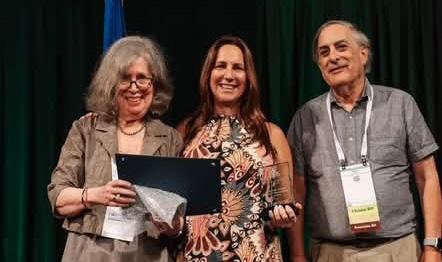
starting their genealogical adventure.”
Upcoming events (all at 2 PM):
Sunday, November 16 – Jewish Records on Ancestry with Crista Cowan, The Barefoot
Zoom).

teens strengthen their Jewish identity and prepare for life beyond high school.
“These classes give teens a chance to think deeply, connect proudly, and apply Jewish wisdom in ways that matter to their future careers,” said Rabbi Shemtov.
“It’s meaningful, relevant, and fun—and it counts for college credit.”
To register or learn more, contact Rabbi Arik Shemtov at 520-861-2705 or email arik@ChabadTucson.com

Every Sunday morning, at 8:15 AM, a small group of Tucsonans has been gathering on the University of Arizona campus mall. They lace up their sneakers, pull on widebrimmed hats, and apply sunscreen, then begin to walk — slowly and purposefully — carrying Israeli and American flags.
Their mission is simple but profound: to march for the release of hostages still held in Gaza.
By Lilian Wasserman
The group, part of a worldwide movement called Run For Their Lives, came together in June 2025. Among its members is Lori Riegel, PhD, a Jewish educator with more than 30 years of experience. A “3-G,” or third-generation Holocaust survivor, Riegel teaches English and Holocaust Literature at Desert Rose Academy in Tucson. This summer, she traveled to Israel.
“I was so frustrated and didn’t know what else to do,” she said. “So I thought the best thing was to go to Israel and show my support.” While there, she visited her uncle, a 97-year-old Holocaust survivor, just weeks before his passing. “I saw so many people wearing yellow ribbons and visiting Hostage Square. I came back with a necklace, a shirt, a hat — all supporting the hostage families.”
For Riegel, the Tucson walks are deeply personal. “It’s important that we gather in a nonpolitical way,” she said. “Hostages are being held. Bodies are being held. This is why we’re here — and why people all over
the world are marching, too.”
Two hundred fifty-one people were abducted during the October 7, 2023, Hamas attacks on Israel — civilians and military reservists, some holding dual or foreign nationalities. Over time, dozens have been released or recovered. As of mid-2025, about 148 hostages have been returned alive and 58 bodies repatriated. As of October 5, 2025, around 48 hostages remain in Gaza, and Israeli authorities estimate that at least 25 are already dead.
The conditions of captivity, as revealed by former hostages and monitoring groups, are harrowing. Many have suffered severe malnutrition, physical abuse, and psychological trauma. Some were held in
underground tunnels or confined spaces with little access to water, sunlight, or medical care. International organizations have repeatedly called for the immediate, unconditional release of all civilian hostages and urged that they be treated humanely and allowed communication access.
In recent weeks, momentum toward a broader hostage-release deal has grown. The U.S. has proposed a framework under which Hamas would release all remaining hostages — both living and deceased — within 72 hours of Israel’s formal acceptance, alongside a phased Israeli withdrawal and prisoner exchanges. Hamas has signaled conditional agreement to parts of the plan, prompting negotiations in Cairo with mediators from Egypt and the United
States.
Israel has expressed hope that the release will occur “in the coming days,” although some observers have cautioned that numerous logistical and political obstacles remain.
The Tucson chapter of Run For Their Lives emerged after another tragedy, says its founder, Tony Zinman. “In Boulder, a local chapter was firebombed on June 1, 2025. Fourteen participants in that march were injured, some seriously, and 118 criminal charges were filed against the assailant. Yet the group was back out there a week after being firebombed,” Zinman said. “That kind of courage was inspirational.”
Zinman quickly researched the Running For Their Lives website and formed a local Tucson chapter online. On Sunday, June 8 — just a week after the Boulder attack — a handful of Tucsonans joined him for the first walk, starting at the University’s Main Gate and ending at Old Main.
Since that morning, they’ve gathered every Sunday, holding banners and signs calling for the hostages’ release. “They’re being starved, beaten, and raped,” Zinman said. “The world needs to be aware — it can’t be hidden.”
Zinman, 58, is a juvenile public defender who has lived in Tucson since 2007. A Los Angeles native, he came to the University of Arizona in the 1980s to study political science, later earning a law degree from Whittier College. He’s active in Congregation Kol Ami, where he serves as secretary of its men’s club.
“I love representing kids because I see myself in them,” he said with a grin. “But seriously, young people still have time to turn things around. I can help them find justice — and that sense of justice, of standing up for the vulnerable, is why I do most things.”
His activism didn’t start with the Tucson Running For Their Lives marches. Back in November 2023, he and a few others tried to hang posters around town to raise awareness for the hostages, but few

Consuelo Hernandez, who are sisters.
“I’m not a morning person,” Zinman admitted, laughing. “Being somewhere at 8:15 AM on a Sunday? Not my favorite. But when I think about what those hostages are going through — starving, tortured, forgotten — I can’t stay in bed.”
What also keeps him going, he said, is the sense of community that’s formed around the march. “As we gather, people talk about what brought them there. Everyone’s got their own story, but we’re all walking for the same reason.”
One of the participants, Ellen Murray, a University of Arizona student, films the walks for social media. In a TikTok video, she held a poster of Tal Haimi, a member of the rapid response team in Kibbutz Nir Yitzhak, who died defending his community.
“Tal got his family to safety and went back to protect others,” she said into the camera. “His wife later gave birth alone and named their baby Lotam — an anagram of his name. Lotam will never know his father.” Then she added, “Every day they’re there is a day too long. We walk, we run, we raise our voices. Enough is enough. Bring them home now.”
Passersby sometimes stop to join after hearing about the march. On two occasions, Israeli couples visiting Tucson stumbled upon the group and were moved to tears. The marchers have been heckled, but, as Zinman put it, “Nothing that would stop us.”
property owners were willing to allow them. “People were scared,” he recalled. “So we just ended up standing at Speedway and Campbell holding up signs about the hostages. That didn’t feel like enough.”
Starting a local Running For Their Lives chapter “clicked” as the best way forward.
“Enough is Enough”
Since the first small gathering, the Tucson chapter has grown into a committed community. Among the regulars are Marty Johnson, a graphic designer; Doug Levy, a personal injury lawyer; Andrew Kunsberg, who is retired; Deborah and Jim Jacobs, real estate agents; and Eddie Areola, a physical therapist. They’ve been joined by Rabbi Yehuda Ceitlin of Chabad Tucson, Rabbi Malcolm Cohen of Kol Ami, and Arizona State Representatives Alma and
Johnson, who also documents the weekly walks, says they’ve become more than a demonstration. “We’ve built friendships and community,” he said. “But we walk with a clear purpose — to remind the world that 48 hostages are still being held in Gaza. They must be brought home now.”
With reports of a possible release of all remaining hostages, the marchers’ prayer is simple: that the release comes soon — and that their Sunday walk will finally no longer be needed. “Ideally,” Zinman said, “we won’t have to do this anymore.”
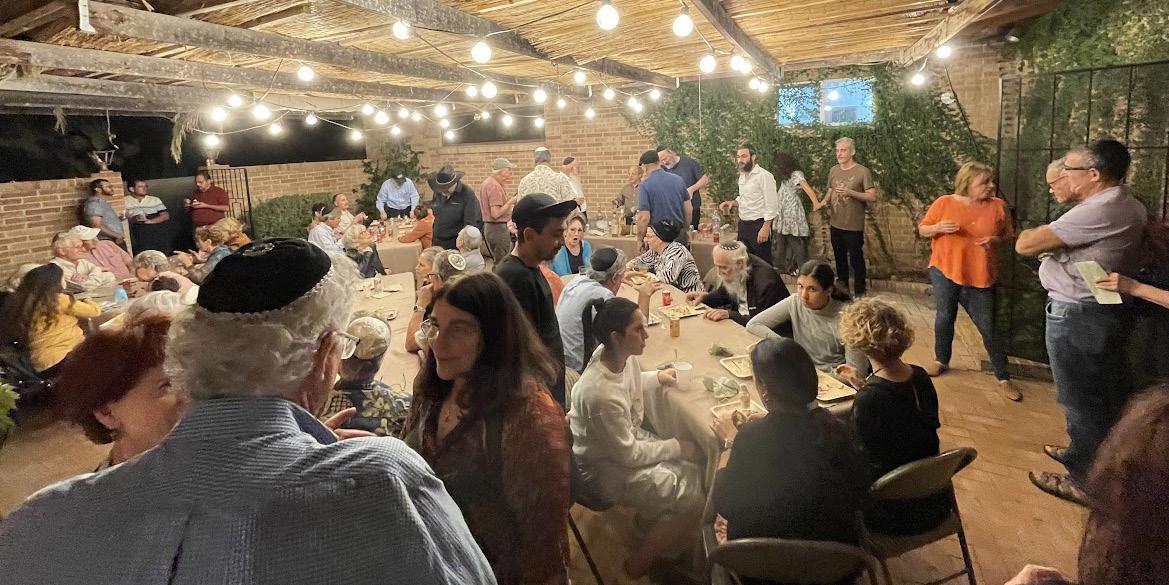
The weeklong Jewish holiday of Sukkot celebrates the gathering of the harvest and commemorates the miraculous protection G-d provided for the children of Israel when they left Egypt. It is marked by dwelling in a foliage-covered booth (known as a sukkah) and by taking the “Four Kinds” (arba minim), four special species of vegetation.
The first two days (sundown on October 6 until nightfall on October 8 in 2025) of the holiday (one day in Israel) are yom tov, when work is forbidden, candles are lit in the evening, and festive meals are preceded by Kiddush and include challah dipped in honey.
The intermediate days (nightfall on October 8 until sundown on October 13 in 2025) are quasi-holidays, known as Chol Hamoed. We dwell in the sukkah and take the Four Kinds every day of Sukkot (except for Shabbat, when we do not take the Four Kinds).
The final two days (sundown on October 13 until nightfall on October 15 in 2025) are a separate holiday (one day in Israel): Shemini Atzeret / Simchat Torah.
By Menachem Posner
Of all the Jewish holidays, Sukkot is the only one whose date does not seem to commemorate a historic event. The Torah refers to it by two names: Chag HaAsif (“the Festival of Ingathering,” or “Harvest Festival”) and Chag HaSukkot (“Festival of Booths”), each expressing a reason for the holiday.
In Israel, crops grow in the winter and are ready for harvest in the late spring. Some of them remain out in the field to dry for a few months and are only ready for harvest in the early fall. Chag HaAsif is a time to express appreciation for this bounty.
The name Chag HaSukkot commemorates the temporary dwellings G-d made to shelter our ancestors on their way out of Egypt (some say this refers to the miraculous clouds of glory that shielded us from the desert sun, while others say it refers to the tents in which they dwelled for their 40-year trek through the Sinai desert).
For seven days and nights, we eat all our meals in the sukkah and otherwise regard it as our home. Located under the open sky, the sukkah is made up of at least three walls and a roof of unprocessed natural vegetation—typically bamboo, pine boughs or palm branches.
The goal is to spend as much time as possible in the sukkah, at the very minimum eating all meals in the sukkah— particularly the festive meals on the first two nights of the holiday, when we must eat at least an olive-sized piece of bread or mezonot (grain-based food) in the sukkah. The Chabad practice is to not eat or drink anything outside the sukkah. Some people even sleep in the sukkah (this is not the Chabad custom).
Another Sukkot observance is the taking of the Four Kinds: an etrog (citron), a lulav (palm frond), three hadassim (myrtle twigs) and two aravot (willow twigs).
On each day of the festival (except
Shabbat), we take the Four Kinds, recite a blessing over them, bring them together and wave them in all six directions: right, left, forward, up, down and backward. The sages of the Midrash tell us that the Four Kinds represent the various personalities that comprise the community of Israel, whose intrinsic unity we emphasize on Sukkot.
Hoshanot and Hoshanah Rabbah
Every day of Sukkot, we say Hallel, a collection of psalms of praise (Psalms 113-118) as part of the morning prayer service. Every day aside from Shabbat, we recite Hallel while holding the Four Kinds, waving them in all directions at certain key points in the service, which are outlined in the siddur.
Afterward, we circle the bimah, holding the Four Kinds, reciting alphabetically arranged prayers for Divine assistance known as Hoshanot.
The seventh day of the holiday is known as Hoshanah Rabbah. This is the day when our fates for the coming year—which were signed on Rosh Hashanah and sealed on Yom Kippur—are finalized. On this day, we circle the bimah seven times. We also say a short prayer and strike the ground five times with bundles of five willows (also known as Hoshanot).
This holiday is so joyous that in Talmudic times, when someone said the word chag (“holiday”) without specifying which one, you could know that they were referring to Sukkot. *
Monday, October 6 - Erev Sukkos
Candle lighting 5:44 PM
Tuesday, October 7 – First Day
Light candles after 6:37 PM
Wednesday, October 8 – Second Day
Holiday ends at 6:36 PM
In 2025, Simchat Torah begins at nightfall on October 13, following Shemini Atzeret. This is a major holiday (yom tov), when work, writing, driving, and the use of electricity are not permitted. We celebrate with festive evenings and daytime meals that begin with kiddush and are filled with song and gratitude. Cooking is allowed if done from a pre-existing flame, and carrying objects outdoors is permitted, except when the holiday coincides with Shabbat.
recite together right, The Four personalities we Kinds, key in as when were also ground (also Talmudic chag one, to Simchat Torah—meaning “The Joy of the Torah”—is the exuberant celebration that marks the completion and immediate restarting of the yearly Torah-reading cycle. It is a day filled with music, dancing, and laughter as we honor the Torah itself. The highlight of the holiday is the hakafot, the processions and dancing with Torah scrolls held in synagogues on both the evening and morning of the festival. In some communities, the hakafot begin a night earlier, on Shemini Atzeret, setting the tone for a celebration that bursts with joy and unity.
After dark, women and girls light candles to usher in the festival, using a flame that has been burning since before the holiday began—often a yahrtzeit candle or a pilot light. Two blessings are recited, thanking G-d for commanding us to light the candles of the holiday and for granting us life and the privilege of reaching this special time.
Evening services are followed by the lively hakafot, seven joyful circuits around the synagogue as men, women, and children dance with Torah scrolls held high. The atmosphere is electric—music, clapping, and spontaneous songs fill the air. Many synagogues begin the evening with a light kiddush, as we have already said goodbye to the sukkah earlier that day, and no one wants to dance on an empty stomach. After
By Benjamin Weiss
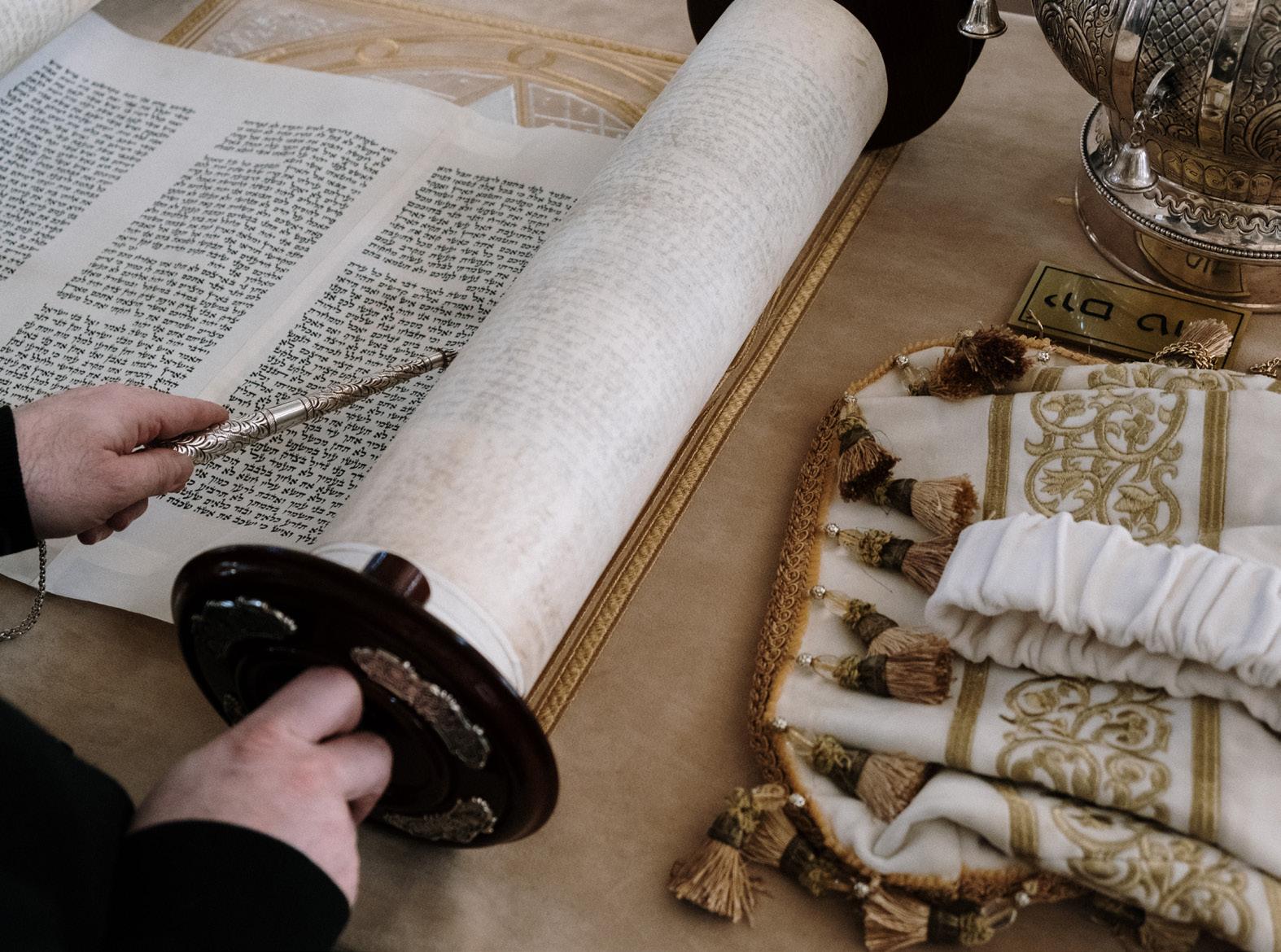
the service, families return home for festive meals, filled with good food, laughter, and a sense of shared joy.
The morning service continues the celebration. It includes the usual holiday prayers, along with special additions for this day of joy. The Priestly Blessing is recited during the Amidah repetition rather than during Musaf, because on this day, many congregants make kiddush and drink wine before the later service, and a priest who has consumed alcohol may not bless the congregation. After the Amidah comes the Hallel, psalms of praise, and then another round of hakafot. Once the Torah scrolls are returned to the Ark, the heart of the day begins—the Torah readings themselves.
Three Torah scrolls are taken out for the readings. From the first, we read Vezot Haberachah, the final portion of
Deuteronomy, completing the Torah. From the second, we immediately begin anew with Genesis 1:1–2:3, the story of creation. The third scroll is used for the maftir, read from Numbers 29:35–30:1. This beautifully seamless transition from the end of the Torah to its beginning symbolizes that our connection to G-d’s word never ends; as soon as we conclude one cycle, we start again, eager to discover new layers of meaning.
Two special honors highlight the Torah readings. The person called for the final reading of Deuteronomy is known as the Chatan Torah, or “Groom of the Torah,” while the one who begins Genesis is called the Chatan Bereishit, or “Groom of Genesis.” These aliyot are highly soughtafter and often given to community members who have shown exceptional devotion or pledged generous gifts to charity. Each honoree is summoned with
a poetic Aramaic passage that blesses and praises them for their dedication to Torah. When the final verse of the Torah is read, the congregation rises to its feet and joyfully proclaims, “Chazak, chazak, venit’chazek!—Be strong! Be strong! And let us strengthen one another!” Then the reading of Genesis begins, and the familiar words “In the beginning, G-d created the heavens and the earth” once again fill the synagogue.
When the readings are complete, the congregation breaks into song—beginning with “Sisu vesimchu besimchat Torah,” meaning “Rejoice and exult on Simchat Torah!” The melodies and clapping fill the synagogue as the scrolls are returned to the Ark and the Musaf service begins.
The day continues with another festive meal, often extending well into the afternoon. When the afternoon prayers are finished, Simchat Torah draws to a close, leaving behind a glow of joy and renewal. We step back into the everyday world inspired by the Torah’s eternal rhythm— ending and beginning, over and over again, in endless celebration of life and learning.
* Holiday Times
Monday, October 13 - Hoshana Rabba
Candle lighting 5:35 PM
Tuesday, October 14 – Shemini Atzeres
Candle lighting after 6:29 PM
Wednesday, October 15 - Simchas Torah
Holiday ends at 6:27 PM
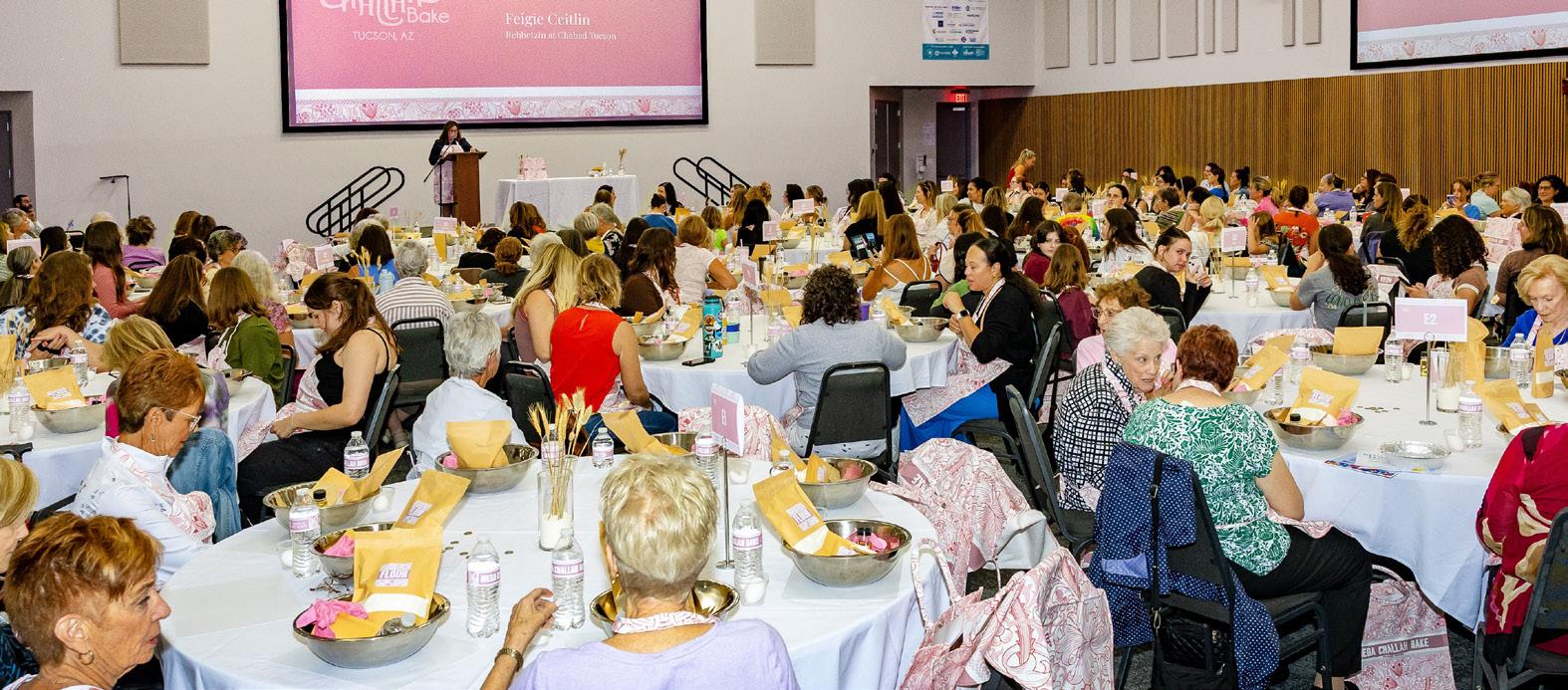




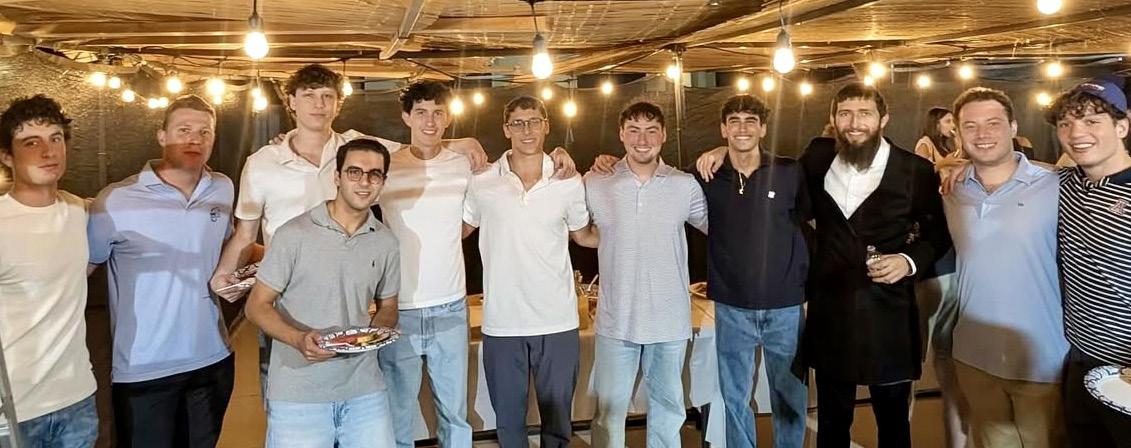


By Feigie Ceitlin
After we got married, I learned that my husband was an adventurous eater. He was willing to try anything—as long as it was kosher. The only exception? Green beans. He’d hated them since childhood. Then I discovered this recipe. These green beans are crunchy, zesty, and surprisingly fun. He’s been munching on them ever since—and once you taste them, there’s no turning back.
INGREDIENTS:
1 lb green beans, ends trimmed
3 cloves garlic, crushed
Zest of 1 lemon
Juice of 1/2 lemon
2 Tbsp olive oil
Flaky sea salt, to taste
DIRECTIONS:
1. Bring a large pot of salted water to a boil. Add the green beans and blanch for 2
minutes until bright green and just tender.
2. Transfer immediately to an ice bath and let sit for about 5 minutes to stop the cooking.
3. Drain well and pat dry.
4. In a large bowl, combine the green beans with garlic, lemon zest, lemon juice, olive oil, and flaky salt.
5. Toss gently until evenly coated. Serve right away, as the edges will begin to oxidize if left standing.
Bah-rookh ah-tah ah-doh-noi eh-loh-haynoo meh-lekh hah-oh-lahm boh-ray pi-ree hah-ah-dah-mah.
Blessed are You, L-rd our G-d, King of the universe who creates the fruit of the earth.
Rebbetzin Feigie Ceitlin is the program director of Chabad Tucson and head of school of Lamplighter Chabad Day School.




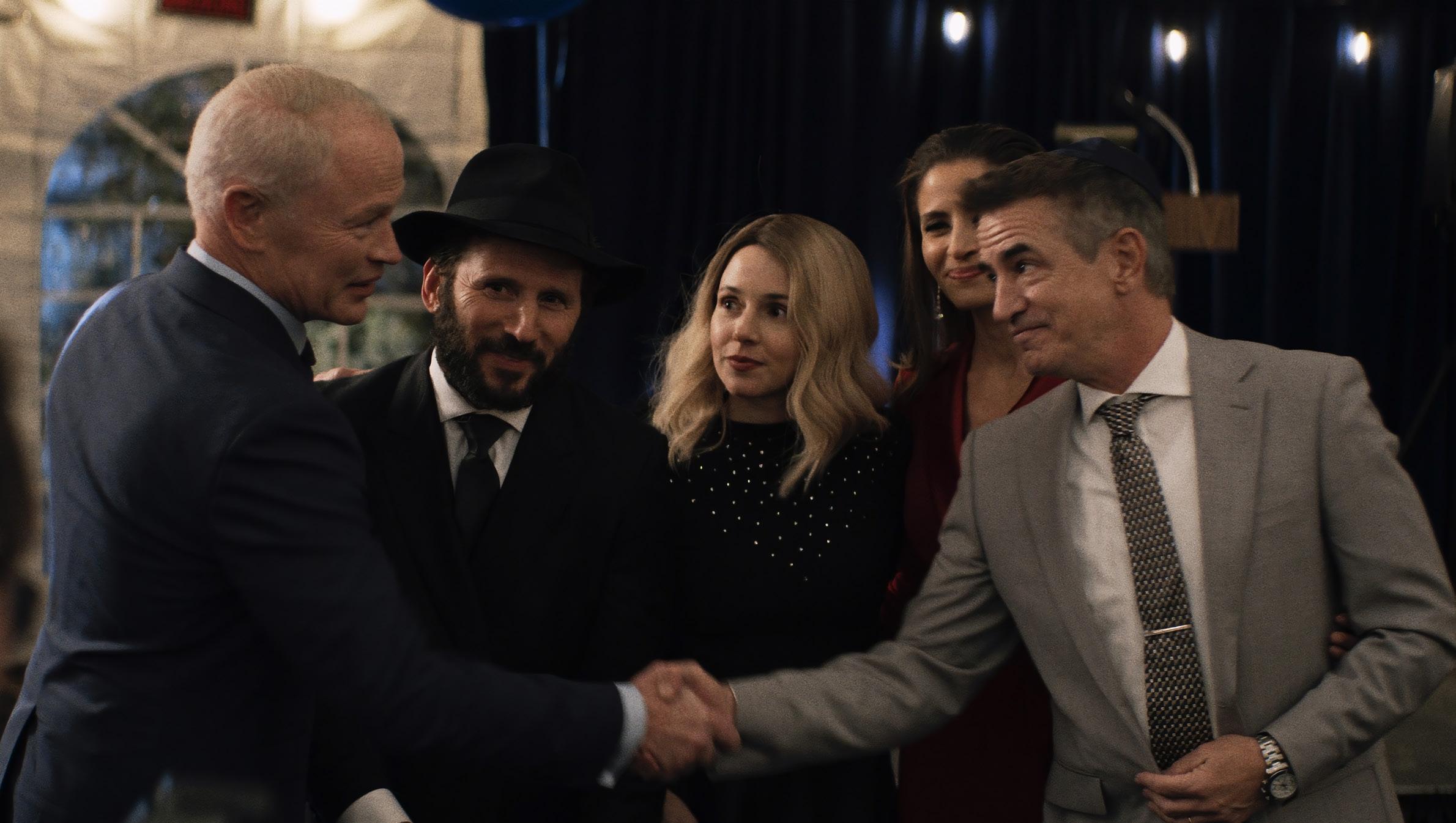
Antisemitism has surged in the wake of the brutal Palestinian terror attack of October 7, 2023, with Jews and Jewish communities around the world facing unprecedented vitriol. It’s against this backdrop that “Guns & Moses” has debuted.
The film follows the fictional Rabbi Moshe “Mo” Zaltzman, who is modeled after a Chabad rabbi, as his peaceful California High Desert community faces what initially appears to be an antisemitic attack during a synagogue gala. When a prominent donor is killed, the rabbi transforms from a peaceful clergyman to a marksman with seemingly natural expertise.
The 90-minute film moves at breakneck speed through multiple plot threads and characters, and the production values impress. High-caliber actors bring gravitas to their performances, while the cinematography and musical score effectively blend Western and Jewish motifs.
By Moshe New and Tzali Reicher
The production itself broke Hollywood norms that often run counter to Jewish practice. Filming took place from Sunday through Thursday, accommodating Shabbat observance, and kosher meals were provided for the entire cast and crew.
For filmmaker Salvador Litvak and his wife and partner, Nina, the film is a love letter to the Chabad movement, which has touched many lives through kindness, learning, and an unwavering commitment to Jewish continuity.
“We just try to communicate our happiness and gratefulness for the amazing journey,” Litvak told Chabad.org. “All our rabbis and teachers have been Chabad, and when we were thinking of telling this story, in a turbulent time for the Jewish people, we knew a Chabad rabbi had to be our hero.”
Every frame of “Guns & Moses” reflects a genuine affection for Chassidic life, from the rabbi’s patient counseling to his family’s supportive dynamics to the
community’s rallying around Jewish values, such as compassion and prayer, during the crisis.
It was this commitment to Jewish tradition that inspired Litvak over 20 years ago.
Born in Chile to Holocaust survivors and raised in New City, New York, Litvak graduated from Harvard Law and worked as an attorney for Skadden Arps. He spent two decades exploring meditation and spirituality, seeking meaning beyond his own backyard.
In 2005, he found himself at his grandmother’s deathbed. Her husband had been murdered by the Germans at the Dachau concentration camp during the Holocaust. In the trying times that followed, she’d heroically shepherded Litvak’s young mother through the Nazi concentration camp at Theresienstadt.
Following her passing, Litvak visited a synagogue for the first time in years. He then threw himself into Jewish learning with the intensity of someone making up for lost time. Every rabbi he encountered kept referencing the Talmud, but those intimidating volumes both fascinated and frightened him.
“They’re just books,” he told himself. “Just start from the beginning.”
So he went to a Judaica store and asked the cashier for Volume 1, Tractate Berachot.
The cashier asked casually: “Oh, you’re doing Daf Yomi?” Litvak had no idea what that meant. When the clerk explained it was a program to study the entire Talmud—one page per day over seven and a half years—and that day was the first of the new cycle, Litvak was stunned.
“Had it been in the middle of the first book, that would have been a cute coincidence… could only be explained as miraculous and Divine Providence,” remarks Litvak.
The ‘coincidence’ launched him on a 2,711-day journey through the entire Talmud. By the time he finished in 2012, he had already left his law career, earned an MFA from UCLA’s film school, and started making movies. But it was that Talmud study that eventually birthed The Accidental Talmudist, his website and social media moniker that now reaches over a million followers.
Litvak’s love of filmmaking remained constant throughout. In 2017, following the shooting attack at Chabad of Poway on Passover, the inspiration for “Guns & Moses” was born. “I was struck by the Chabad response to antisemitism,” he says. “It wasn’t passive or handwringing. It was about inspiring others to learn more Torah and perform more mitzvot.”
Together with his wife Nina, Litvak sat down to write what would be their third film as a couple. “We do everything together,” he explains. Working to get it
made was a lot harder than anticipated.
“We got a lot of actors who declined to participate because they thought it was ‘too Jewish,’ while filming locations kept falling through,” Litvak says.
At one point, Litvak needed a sign from Above. “I looked up to Hashem [G-d], and asked for a sign that we were on the right path… At that moment, I got a call from my producer who said we had been approved for a California tax incentive worth $500,000.”
The $500,000 incentive usually goes only to major studio productions. The reason they approved it? “They told us they were very impressed with us mentioning in our application that we would be Shabbat observant and were blown away by our commitment to principle.”
Recognizable actors soon joined the production. The leads, Mark Feuerstein and Alona Tal, who play Rabbi Mo and Rebbetzin Hindy Zaltzman, are both Jewish. Litvak wanted to create something that honored, rather than caricatured, traditional Jewish life. With authenticity in Hollywood easier promised than delivered, Litvak consulted with several rabbis to ensure the film’s look and feel felt right.
There is close attention to detail in its depiction of a Chabad rabbi. Rabbi Zaltzman appears in a fitted kapote and black hat. His wife wears the modest dress and wig as would a real rebbetzin. Children run the center’s tech equipment. Props include actual seforim (holy books).
Litvak captures an authentic Jewish response to crisis: the community rallies in prayer, the rabbi counsels people from all walks of life, and everyone commits to renewed Torah study and mitzvah observance. The film portrays a Chabad House’s diverse mix of spiritual seekers, cultural Jews, and Holocaust survivors.
Rabbi Zaltzman himself is a familiar figure—compassionate, resourceful, and wise—whose scenes of guidance and faith mirror real Chabad outreach. Yet while the film aims to explore Jewish empowerment,
its finale belongs to Hollywood, turning the rabbi into an armed detective rather than a spiritual leader.
The film was released in July and quickly gained buzz far beyond the niche Jewish entertainment circuit. Initially, the production had a deal to screen on over 70 screens across the country, an impressive debut for an independent film, yet that quickly fell through.
“It was quite dispiriting,” says Litvak.
“We knew we had made a great film with an important message, but we thought people wouldn’t be able to view it until it was released on streaming services, which is still months away. It also looked like we wouldn’t be able to recoup our costs, which would stop us from making films in the future.”
Then came a miraculous breakthrough.
Someone on the production team had the idea to reach out to a company that arranges event screenings for films in hundreds of locations nationwide. They set up showings for a limited run, and the booker reached out to see if they would do so for “Guns & Moses.”
“At first, they declined, saying the film already had been showing, however briefly, and since we didn’t go to them first, they didn’t see how they could work with us. But after seeing the film and its message, together with the buzz we were receiving, they came back to us immediately with an offer. Such a thing is unprecedented,” says Litvak proudly.
The result? “Guns & Moses” was shown on 550 screens across the United States and is now available for streaming on Amazon Prime and Apple TV.
“All the success is clearly from Hashem,” Litvak says. “Nina and I are looking forward to bringing our story to so many more Jewish communities, and to what we can do in the future. With the messages of the Torah, and the support of the Jewish community, there’s nothing we can’t do.”

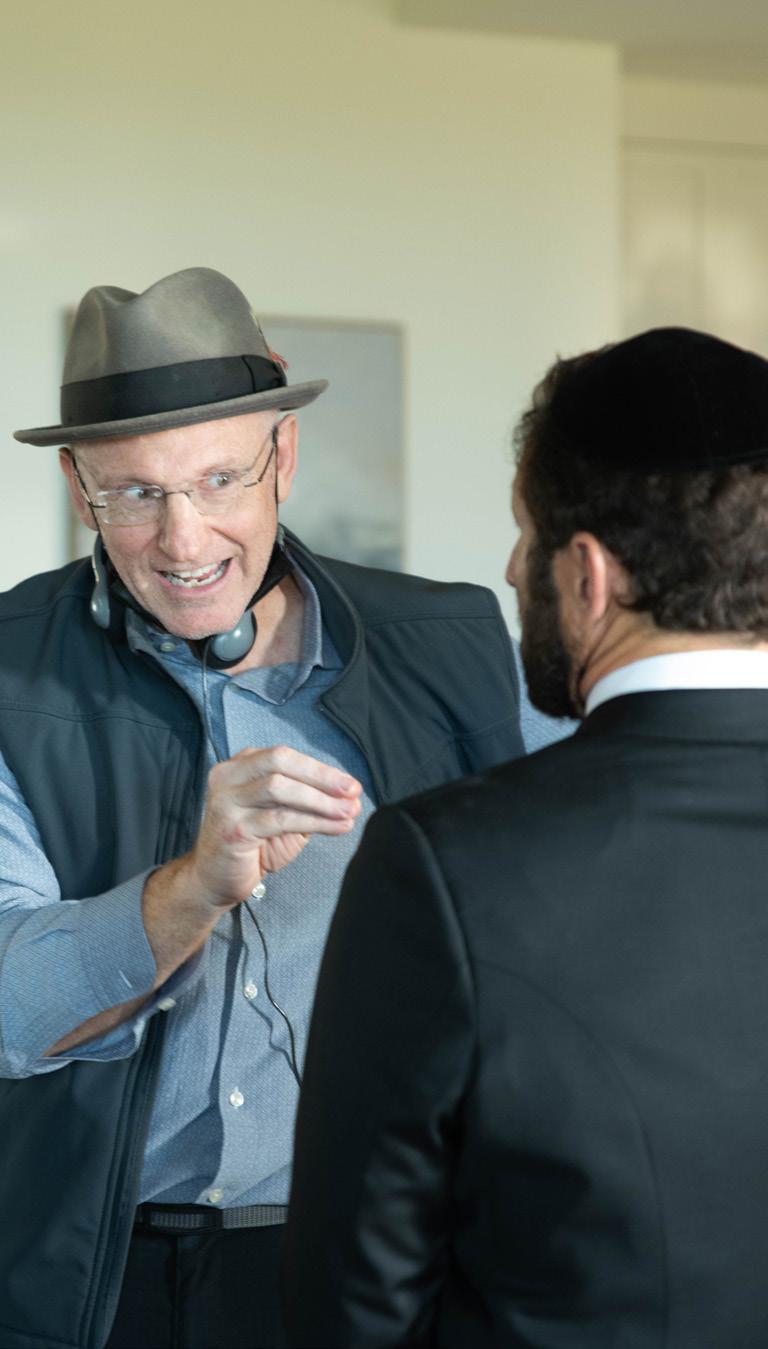

By Chabad.org Staff
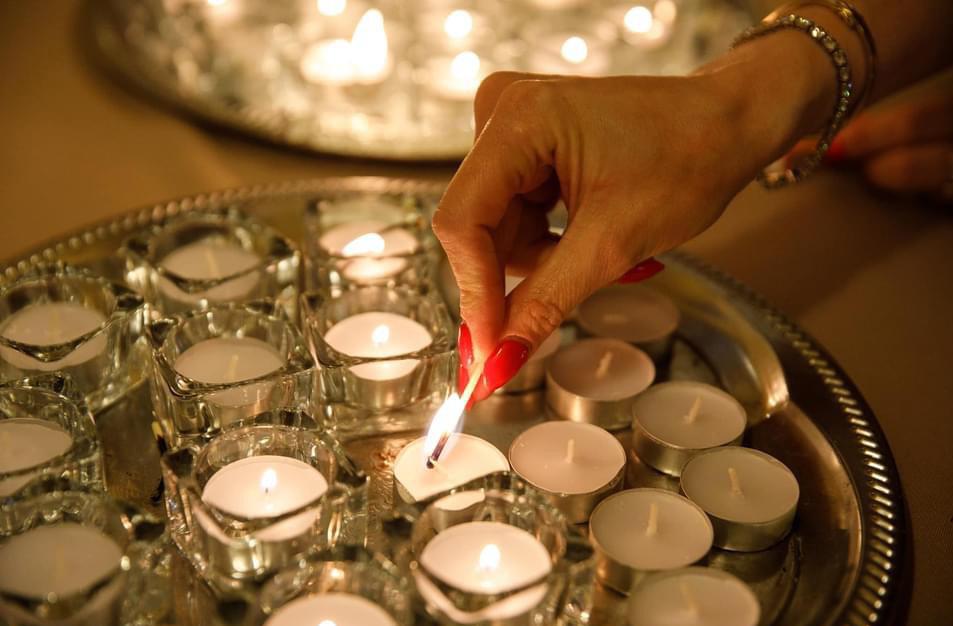
Most often, ‘bentching’ (used as both a noun and a verb) refers to Grace After Meals (Birkat or Birchat Hamazon) and the chanting of it. (Note that in this case, the “ch” is pronounced as it is in English, not as a guttural kh sound).
This bentching consists of four primary blessings—the first composed by Moses when the manna came down from heaven in the desert, the second by Joshua when
the children of Israel ate from the first harvest after entering the Holy Land, the third by the Kings David and Solomon, and the fourth by the sages in Mishnaic times.
The original Yiddish term “bentch” is a verb for blessing (but not a noun). It can be applied to a variety of situations.
For instance, if you need some Divine

In that case, the bentching is associated with the very mitzvah itself. Last year, Chabad placed a mobile sukkah in front of El Al’s terminal at Newark International Airport in New Jersey so that travelers could bentch lulav and etrog on the holiday of Sukkot.
Candle-lighting on Friday before Shabbat (which is followed by a blessing) is referred to as licht bentchen, “candle blessing.” Additionally, the time when candles are lit (generally 18 minutes before sunset) can also be referred to as licht bentchen. So, as she hurries to get ready for Shabbat, a mother may tell her daughter, “Please get out of the shower already! There are three people in line after you, we are running out of hot water, and there is less than an hour to licht bentchen.”
assistance, you may say to your friend, “Please bentch me that I should ace this test.” Upon its completion, you can say, “Wow, was I bentched!” More properly, you’d say, “Wow, was I gebentched.”
Technically, ‘gebentched’ is the correct past participle in Yiddish, but in casual English conversation, many people say ‘bentched.’
Many mitzvahs are performed after (or sometimes before) reciting a brief blessing.
After enduring certain dangerous situations (including overseas voyages, trips through the desert, incarceration, serious car accidents, or severe illnesses), a special blessing called Hagomel is said, generally at the Torah reading in the synagogue. The act of saying this blessing is to bentch hagomel, or bentch gomel. Thus, after a visit to Israel, a person may say (not entirely in jest) that the bus drivers there were so wild, he felt he needed to bentch gomel.
In contrast, in Modern Hebrew, people simply say levarech (‘to bless’). The Yiddish ‘bentch’ stuck around mostly in Ashkenazi and English-speaking circles. And so, we bentch you: may you have a happy and sweet new year.

lexander Levin was an early Jewish pioneer in Tucson who made significant contributions to the city’s development through the numerous institutions he established.
Born in the Kingdom of Prussia in 1834, the origins of Levin’s arrival in the United States are obscure. However, by the 1860s, he had joined many other Jews profiting from the lucrative mining industry along the Colorado River in La Paz. He did not work in the mines, but instead opened public baths and a brewery to refresh the local miners.
By 1864, Levin had moved to Tucson, where he continued his work as a brewer. He also became involved in cattle trading, leading him to frequent trips to Mexico. During one such trip, he met and married his wife, Zenona Molina, who was originally from Hermosillo. The couple was married around 1873 and worked together to open numerous establishments throughout Tucson.
Their first enterprise was, naturally, another brewery, which they named the Park Brewery. It opened at the beginning of Pennington Street and sold porter, ale, sarsaparilla, and soda water. Levin also replicated his business practice from La Paz, opening public baths—open to the male public, that is, his clients.
From this point forward, Zenona and Alexander’s enterprises expanded. They
purchased a hotel and several saloons where beer from their brewery was sold. The brewery was enhanced with the addition of gardens, and a threeacre private park, called Levin’s Park, was created around it. The Levins’ establishments were cherished in Tucson, and Alexander, having taken the nickname Boss Levin, understandably became a beloved figure.
His parks, filled with native and foreign flowers, vegetables, fruits, and trees, were cherished green oases in the dusty city. They were freely available for public ceremonies, notably the Fiesta de San Agustin. The park eventually included a large meeting hall where Jews gathered to pray and formed Tucson’s first congregation, Congregation B’nai Israel.
Levin’s entrepreneurship was marked by flashes of innovation. Two of these have become global mainstays and are very useful during Tucson’s brutal summers: selling bottled water and cold beer.
The 1880s brought different fortunes to the Levins. The arrival of the railroad in Tucson brought an abundance of cold, cheap beer from California and the East Coast, and Levin’s Park became increasingly frequented by miscreants and drunkards.
Alexander and Zenona chose to lease out their brewery and left Tucson for Mexico, where they stayed for four years. Upon their return to Tucson in 1891, the couple

found that their park had experienced a significant decline. Not long after, Alexander Levin died of a heart attack on September 29, 1891, at the age of 58. His wife, Zenona, outlived Levin and was survived by their daughter, Sara Levin Ronstadt, and their son, Alexander Jr.
None of Levin’s works are in the city today due to ongoing urban renewal programs that started in the 1960s.
–Presented in collaboration with the Tucson Jewish Museum to honor the city of Tucson’s 250th anniversary. For the full biography, visit tjmhc.org/profiles



Tishrei is an ideal time to work on our character traits, and a good one to work on is selfishness. I bet you agree. You’re saying, “Yeah! Everybody around me needs to work on their selfishness!”
“Yeah, well, what about you?”
“I’m thinking of others right now! I’m thinking of several others who need to work on it.”
But we all can be selfish. For example, we all get very selfish when we’re behind the wheel of a car. We think, “I have to get somewhere in a hurry. Why is that guy in my way?” We think this whether the objectionable car is going too slow or if it just passed us.
By Mordechai Schmutter
We can even be selfish when shmoozing with our friends, because when other people talk, we often don’t listen. Like when you’re waiting for your turn to speak so you can tell a different version of the exact story they’re telling, only your version is better because it involves you.
According to experts, another sign of being selfish is that you get nervous when you’re not the one in control. I sometimes get nervous when I’m not in control, but then, I’m a teacher, so I probably should be nervous. On the other hand, you ask, since I’m a teacher, shouldn’t I be teaching the kids that it’s okay not to always be in control? I’m not that kind of teacher. Also, when a kid wrests control of the class from me, he doesn’t then teach everyone
be the one cleaning it up. At the very least, you should drop a little tip on the ground for whoever does.
Wait. Have I been picking up other people’s tips but not their litter?
Okay, so you’re thinking, “What am I supposed to do? Hold my empty Slurpee cup until I find a garbage can somewhere?”
No, that’s crazy. What am I thinking? Though if you’ve just treated yourself to a Slurpee and suddenly your wife rolls up with all of the kids in the car, and you know that if they know you were drinking a Slurpee, they’re all going to want one. But even then, it might be a better idea to hold onto it, and when your kids ask, say, “Oh, I noticed that someone dropped this, and I was trying to clean the planet.” Turn it into a teachable moment.
That way, you can spend the rest of your parenting career watching your kids pick up other people’s used garbage bare-handed and cringing about how many germs they’re picking up.
“See, Daddy? I’m picking up all these beer bottles! Like you with the Slurpee that one time!”
English.
How about making noise when people are trying to sleep? I mean, morning people think it is totally okay to make a racket. You can slam things as loud as you want, turn on lights, honk your horn, mow your lawn right outside the window, and so on. What if you are a night person? No such rights. You have to tiptoe around and whisper. If I mow my lawn at 2 in the morning, I’m the bad guy. People are trying to sleep so they can wake up early tomorrow morning and annoy me.
And how about people who litter? Is your mother going to come down the street behind you and clean up your mess? You’re the one who enjoyed the snack; you should
And what about when you don’t knock before coming into a room? I’m not even talking about a case where the person in the room is in a compromising position, like if he’s making change in a pushka (charity box) and you walk in just in time for the part where he takes out the money. It could be he is just standing in front of the door, and you’re about to slam him in the face.
This works both ways. If you’re the person in the room, you need to loudly and clearly respond to the knock. Because how long can someone stand there wondering if anyone is in the room before they open the door? But try not to say “Who is it?” because if you say “Go away,” they will take it personally.
So here’s an idea: better yourself. Yes, before you improve anyone else, ask what you can do to make yourself better. Me first, right? You deserve it.
1. What is the biblical name of the holiday we know as Simchat Torah?
A. Shemini Atzeret (“the Eighth [Day] Pause”)
B. Torah Tzivah (“Torah [has been] Commanded”)
C. Chag HaLimmud (“Festival of Study”)
2. What does Simchat Torah celebrate?
A. The conclusion (and beginning) of the annual Torah-reading cycle
B. The relatively rain-free Sukkot we just experienced
C. The anniversary of the passing of Miriam, sister of Moses
3. Which of the following Sukkot mitzvahs is performed on Simchat Torah as well?
A. Eating in the sukkah
B. Taking (and shaking) the Four Kinds
C. Joyous celebration
4. What are hakafot?
A. “Beating”: Banging willow branches upon the ground
B. “Encirclings”: Dancing the Torah around the bimah (reading table)
C. “Honorees”: The men chosen to
By Chabad.org
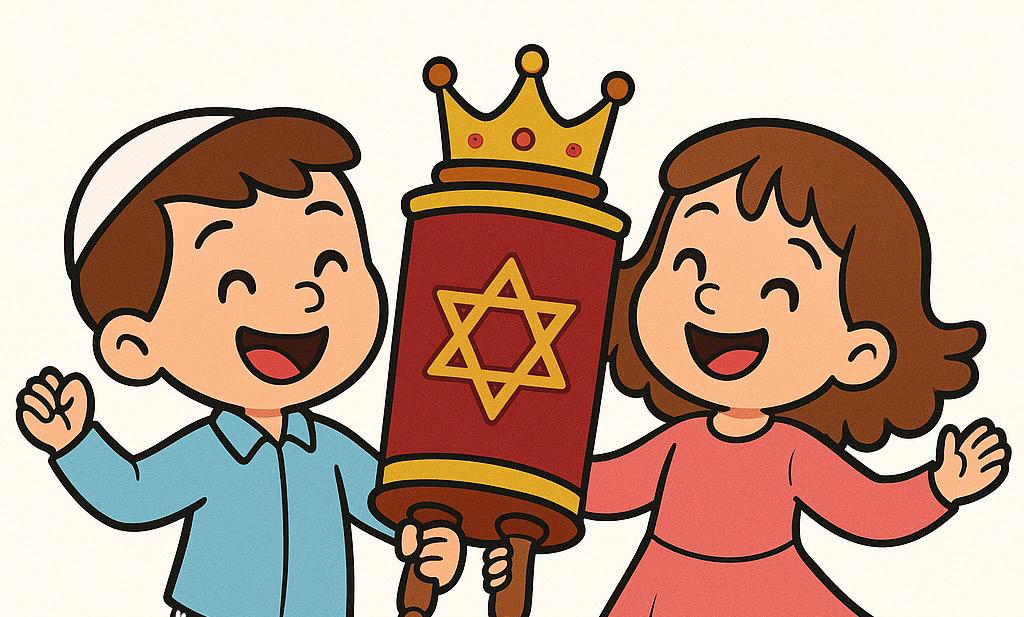
dispense wine and welcome newcomers to the celebration
5. How many hakafot are there on Simchat Torah eve?
A. 7, like under the marriage canopy
B. 13, the age when a Jewish male is obligated to follow the Torah
C. 18, the numerical value of “life,” which we derive from the Torah
6. What do children traditionally carry during Simchat Torah celebrations?
A. Cutouts of the two Tablets
B. Name tags so they can be easily returned to their parents
C. Flags
7. Who is the chatan Torah?
A. The person called to receive the first
aliyah in the Torah
B. The person called to perform hagbah (lifting of the Torah) for the final time
C. The person called to receive the final aliyah in the Torah
8. Is the Yizkor memorial for departed loved ones said on Simchat Torah?
A. Yes, it is the final day of the holiday, so why not
B. No, we already said it on Yom Kippur, and once a month is enough
C. Only in Israel, where Shemini Atzeret/Simchat Torah is crammed into a single day
9. How many Torah scrolls are (ideally) read from during the Simchat Torah morning service?
A. 2
B. 3
C. 4
10. What is read from the Torah on the Shabbat after Simchat Torah?
A. All of Bereishit, the first portion
B. Only the second part of Bereishit
C. Noach, the second portion

